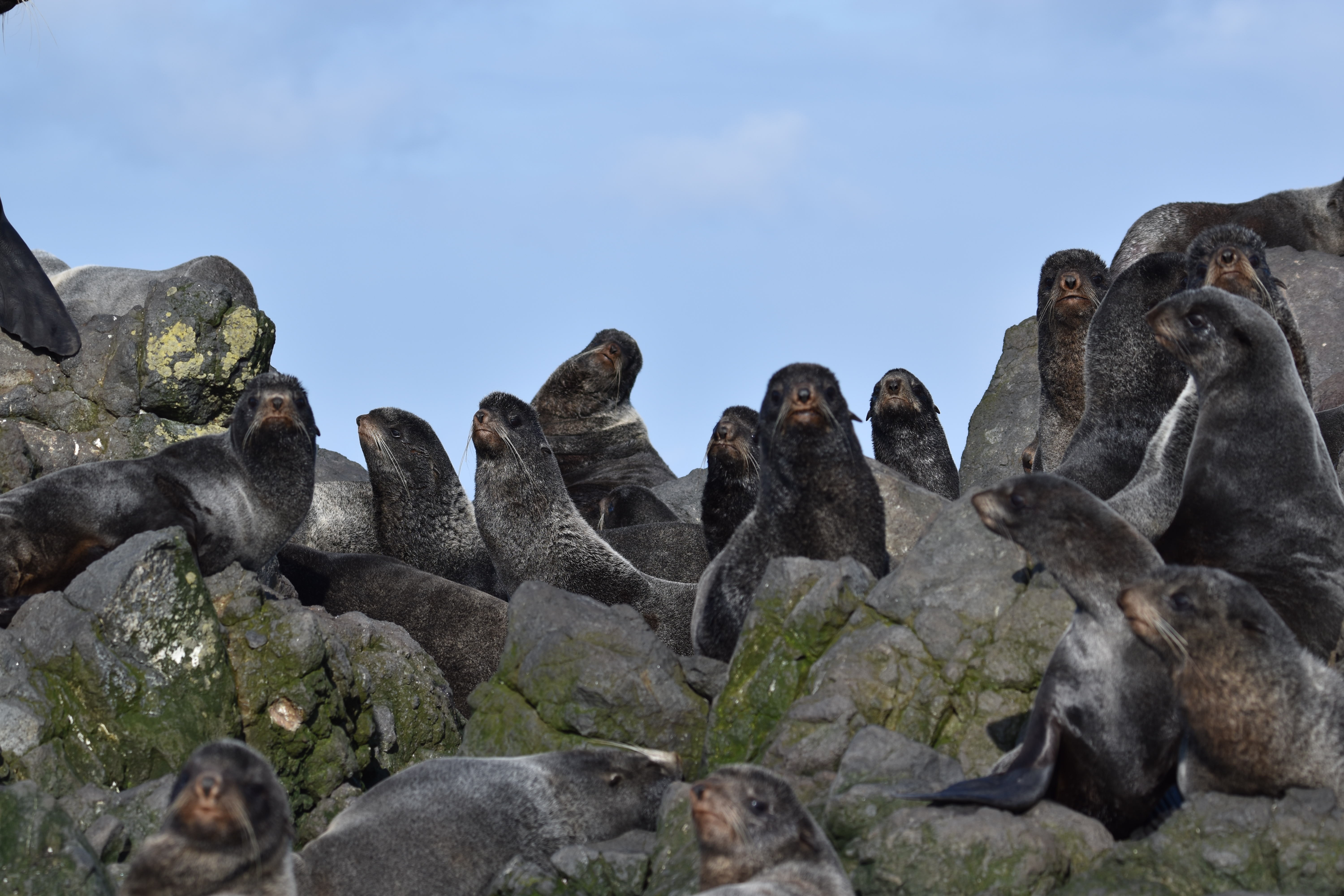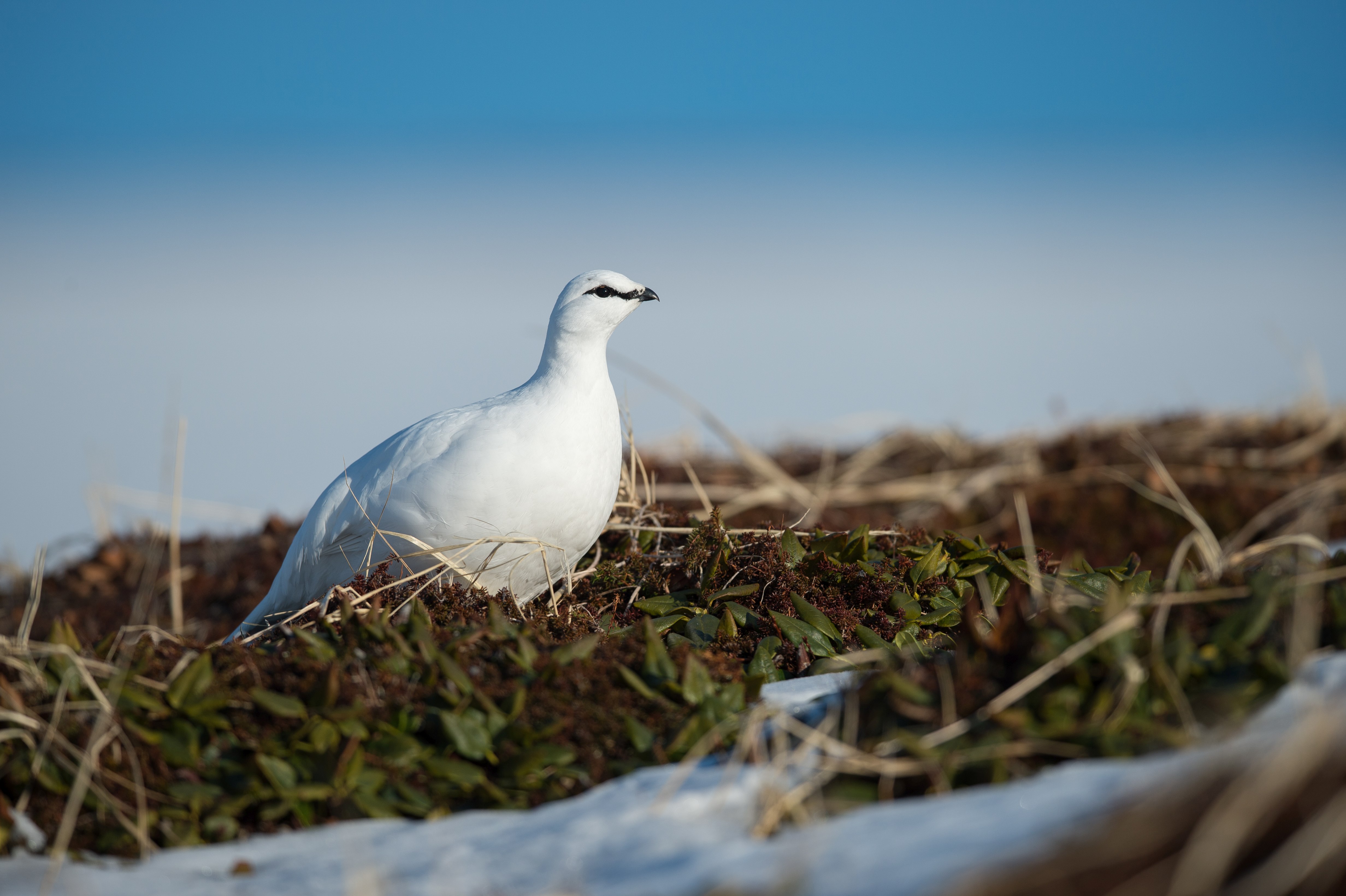Bad and cold weather conditions are no reason to stop work! This year's snowy winter has significantly complicated the implementation of traditional works. However, at every opportunity, employees of the scientific department of the CINBR travel the islands to keep records of wintering birds, Arctic fox, reindeer and marine mammals.
Bering Island Arctic fox in its winter "outfit". Our team documents time and coordinates of each arctic fox met in winter. Photo by Alexander Shienok
Such painstaking work provides a general picture of the status of many species populations, which spend winter on the islands. For example, over the past few years, a small number of male northern fur seals of varying ages have remained on the rookery, while pregnant females and most males have gone to wintering sites much further south. Sea lions are much less common this year: their number on the rookery can be called insignificant, the number varies throughout the winter and early spring.

Northern fur seal males wintering on Bering Island. Photo by Stepan Svidin
Due to the inaccessibility of monitoring from ship, we counts wahles only from the shore, using a spyglass and binoculars. The shape of the body, tail fin and fountain of a whale made during breathing make it possible to accurately determine the species of whale encountered in the water area.
Pattern on the downside of a humpback tail fin is individual as fingerprints are for humans. Photo by Evgeny Mamaev
As for monitoring of ornithofauna, the data is still being processed, but it can be said that in general the number of species noted during the counts has practically not changed. Winter is quite a difficult period in the life of birds, so many species leave the nesting sites and migrate to more southern latitudes. The Commanders are no exception in this case. Most of the birds nesting in the archipelago leave it. Seabird colonies are empty, few packs of snow buntings run across the snow-filled seaside meadows. Only partridges and few owls remain in the tundra. As usual, the most popular winter species is the harlequin duck. Unfortunately, we can not determine the total number of Steller's eiders, because most of them winter south of Buyan Bay, which we could not reach this year. However in the surveyed areas the number of this species is comparable to the data of 2021, but less than in previous years. Year after year, the number of wintering pintails is growing.

Commander Rock ptarmigan, listed in the Red Data Book of Kamchatka Krai. It spends winter on Bering Island. Photo by Aleksey Perelygin
It's not the first winter that we register the brant goose on Bering Island and this becomes a new norm. This year, we met four birds on the east coast. This species is listed in the Red Data Book of the Russian Federation and Kamchatka Krai and its numbers on the island are very low. Single birds are still wintering here, but on the flyby they are seen more often than a couple of decades ago and we hope that brant geese will find favorable conditions for wintering here and their number will grow. But it's up to us. Do not forget that this species is not is strictly prohibited to hunt for.

The number of brant geese is steadily growing, thanks to protection measures. Photo by Dmitry Pilipenko
We were pleased to see the buffle-headed duck, although this species was noted regularly at the wintering, but literally in two or three places and in a small number. Flocks of 2 to 8 whooper swans were registered probably on the flyby. Methodology of winter counting is honed by many years of practice and well unified. This year winter counts are still ongoing. In addition, our employees will have to work hard to process the received data, the results of which we will definitely share with you!









